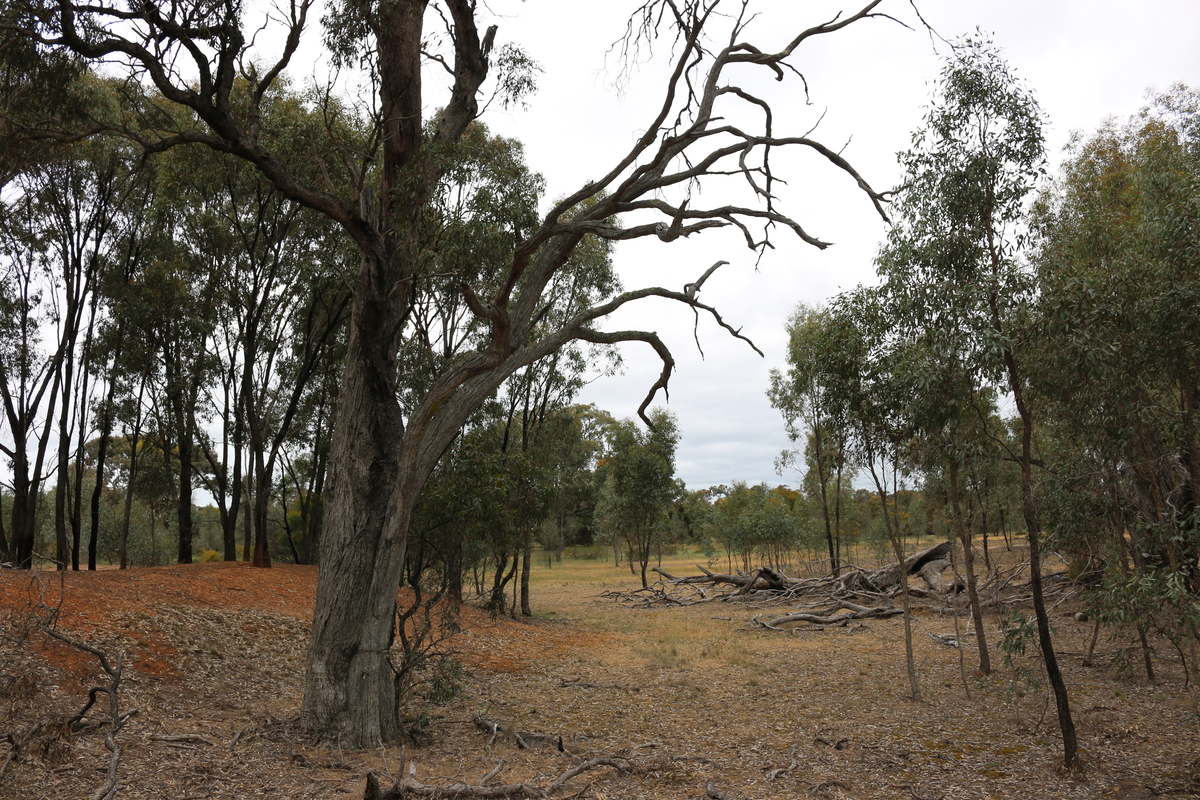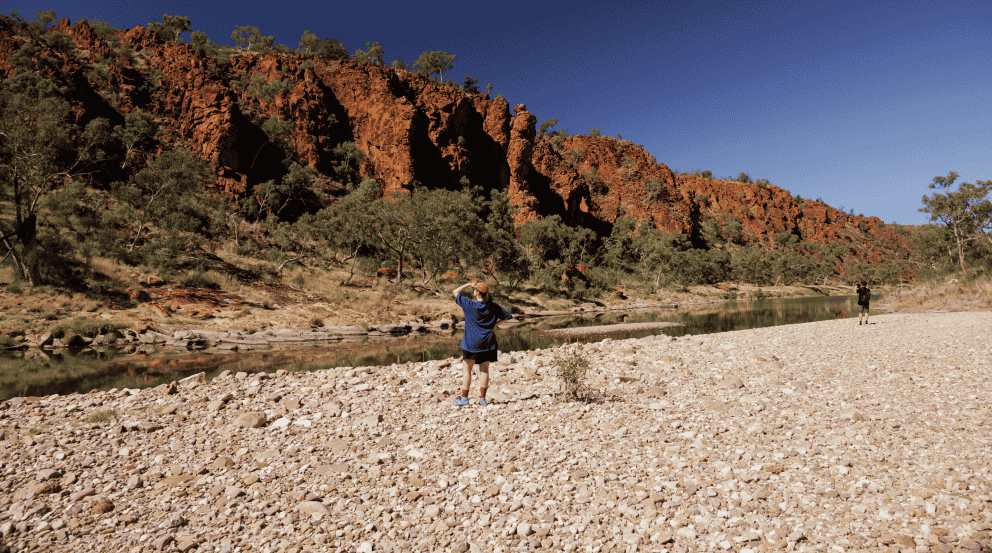On South Australia’s Fleurieu Peninsula, up to 90% of native habitat has been lost since colonisation. Through grassroots rewilding initiative The Forktree Project – a Bank Australia community customer grant recipient – environmental scientist Tim Jarvis is determined to change that, one seed at a time.
On South Australia's Fleurieu Peninsula, a vast amount of natural habitat has been lost.
“Adelaide was established in 1837, and by the early 1840s, farmers were down here trying to farm this land as if it were Europe,” says environmental scientist Tim Jarvis, who works with governments of all levels on protecting the ocean and biodiversity. “We lost up to 90% of the habitat in this part of the world.”
This profound loss of biodiversity is what inspired Tim to found The Forktree Project, a habitat restoration charity just an hour south of Adelaide and a Bank Australia community customer grant recipient.
His goal? To reverse some of that damage and show what’s possible when we give nature the space and support it needs to recover. “The vision is to restore this place to something that would have been recognisable to a First Nations person several hundred years ago,” he says.
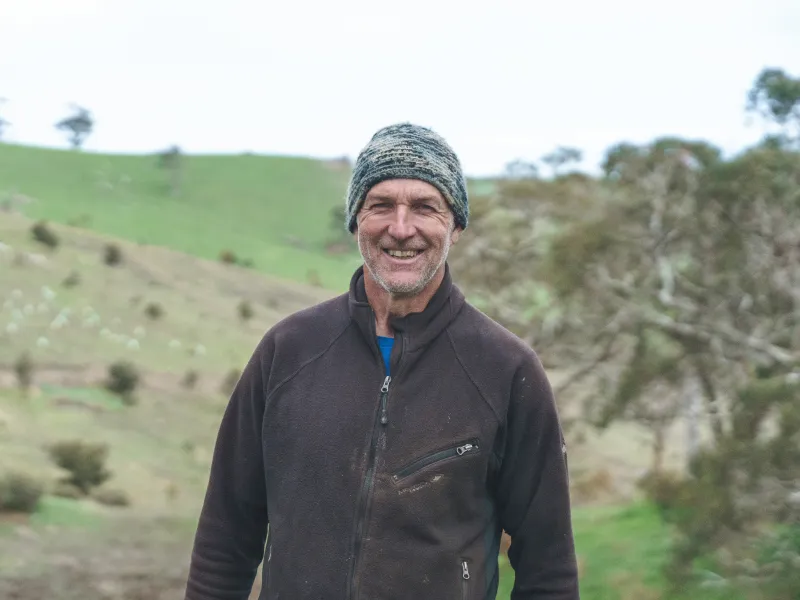
What is rewilding?
“Rewilding is a very interesting concept,” Tim says. “It means different things to different people. In Europe, you can just allow habitat to run wild and do its own thing, but in the context of Australia you've got to manage it really carefully. We have a lot of introduced species, so if you just left the land and removed the cows and sheep, you’d end up with a sea of European weeds, which die off in summer and become a major fire risk.”
The Forktree Project is more systematic about the vegetation they remove and the native plant species they put back in. “I thought there was a real need to show people how you rebuild that habitat,” Tim says. “And to do that close to a population center, so people can actually come and see the work we’re doing.”
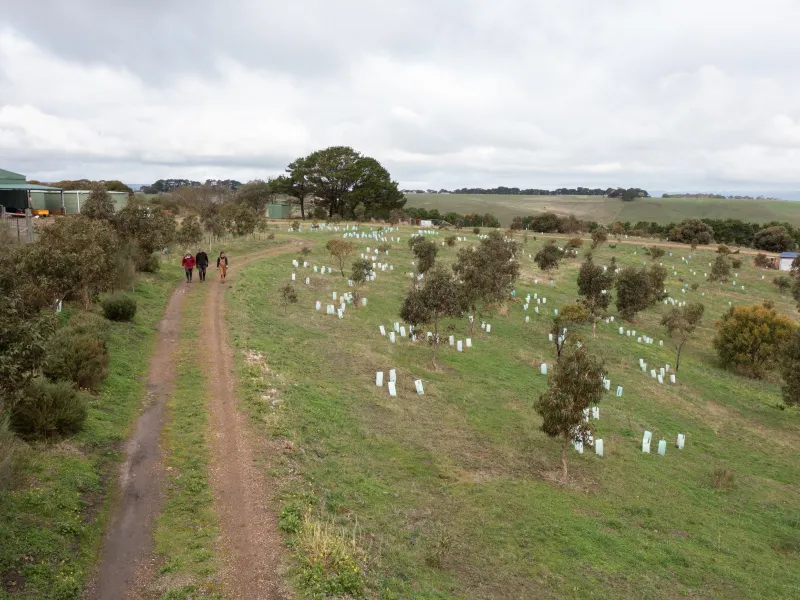
A triple-pronged project
Forktree’s work is divided into three key areas of impact:
- Rewilding the landscape
Rebuilding a functioning habitat for all living things – plants, people and animals – is the primary focus of Forktree. Since starting six years ago, the team has planted tens of thousands of native trees, shrubs and ground covers to rebuild habitat and attract local wildlife. “Everything you see here that isn't grass essentially is being put in by us,” Tim says. “We've got that responsibility to restore habitat. We need it for First Nations’ connection to Country, we need it as our ally in the fight against climate change, and we need it for our own mental, physical and psychological well-being.”
- Rare seed orchard and nursery
Forktree’s rare seed orchard, funded in part by a Bank Australia community customer grant, includes hundreds of native species with cultural, medical and edible significance to First Nations communities, and has been created in consultation with the local Ngarrindjeri and Kaurna peoples. “We grow these rare plants, harvest the seeds and propagate them in our nursery where we're growing tens of thousands of plants that we can use to rebuild habitat,” Tim says.
- Education and outreach
With so much knowledge on site, Forktree feels a responsibility to share it and demonstrate how others can help restore biodiversity. “We run an education program for schoolchildren, disadvantaged youth, corporate organisations, politicians and other landowners,” Tim says. “If we can show an example as to what’s possible, we can hopefully engage smaller scale landowners to be part of the solution.”
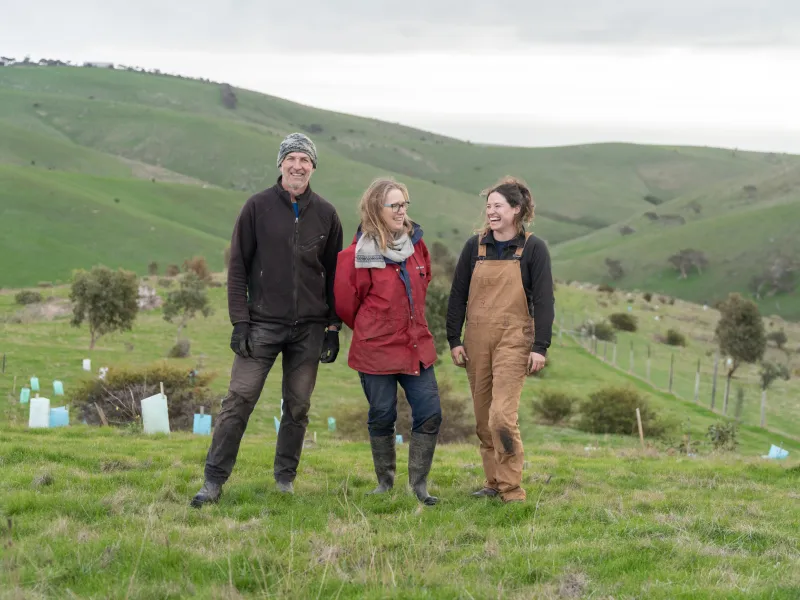
The power and resilience of nature
Tim takes us on a tour though Forktree’s First Nations garden space. There are medicinal plants, edible plants, fire-wise plants that are resistant to heat, plants that can be turned into tools or with resin that can be used as glue, and a sensory garden with plants you can taste, touch and smell to calm down or relax.
“My favorite part about this area is how kids react to what the different plants can actually be,” Tim says. “Rather than just seeing a whole bunch of green, they can see the utility of each plant.”
That’s what Tim wants people to take away from Forktree – the endurance of the land, and how much we need it. “The thing that amazes me about nature is just how resilient it can be,” he says. “If we just give it a hand – take our foot off its throat – it can come roaring back so quickly, which I think is a cause of great hope.”
For those interested in starting their own rewilding projects – on larger properties or in their backyards or community gardens – Tim has a key piece of advice. “The obvious starting point is doing an audit to work out what you have – like native plants, weeds and animals – then work out where you want to get to. It’s very important to understand where you're headed, because that helps you design the whole rewilding process.”
Ultimately, Forktree hopes to be a living reminder of how deeply connected we are to the natural world. “We're less stressed when we spend time in nature,” Tim says. “We need it physically. We need it psychologically. It's who we are. We need to turn towards nature and actually start learning some of the lessons it provides.”
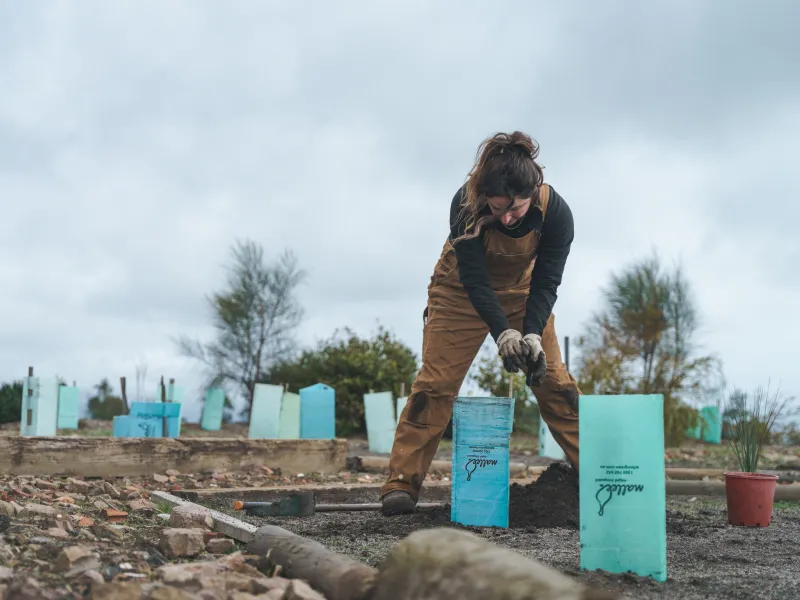
Bank Australia and Forktree: A shared vision
Nature and biodiversity are central to Bank Australia’s purpose, and something our customers consistently tell us they care deeply about. It influences our investments, our lending, our projects – including our 2,117 square kilometre conservation reserve in Western Victoria – and how we choose recipients for our community customer grants.
“I chose Bank Australia because I wanted a bank that actually did what it said and believed in the same principles as me,” Tim says. “It was a wonderful thing to discover the grant program and then find that we were eligible to apply. You really do need support from organisations who care, and the funding has been absolutely critical in helping us get off the ground and turn this into a viable entity.”
Learn more about Bank Australia’s community customer grants.




